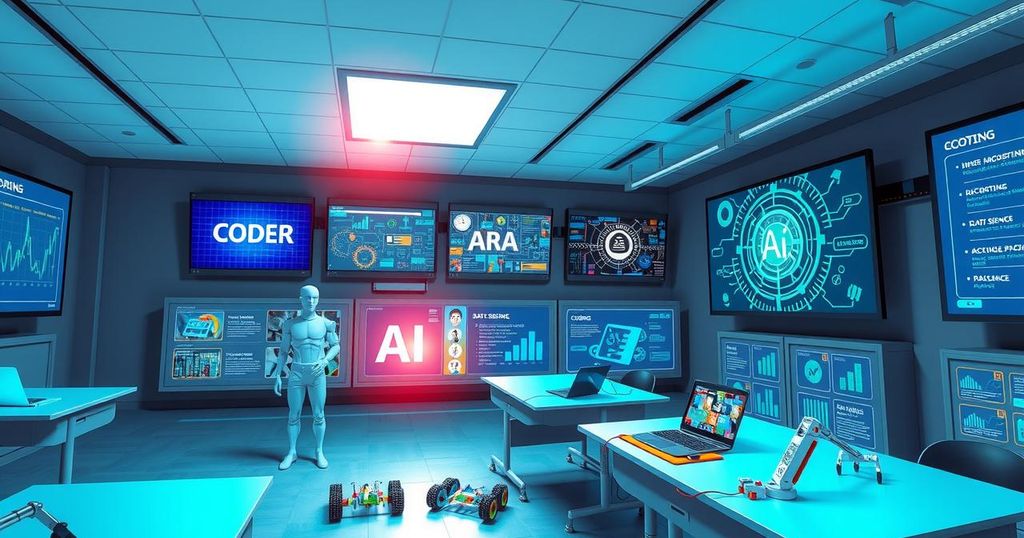Trump’s Executive Order Seeks AI Integration in K-12 Education
President Trump’s draft executive order proposes the integration of AI into K-12 education, aiming to enhance AI literacy for students and teachers. This reflects a competitive response to China’s educational reforms. The order calls for a White House task force and encourages public-private partnerships to boost AI education funding, while raising concerns about critical thinking skills amidst increased reliance on AI tools.
In a surprising move, President Trump’s administration is pushing to integrate artificial intelligence (AI) into K-12 education, placing it at the forefront of the educational agenda. The draft executive order, titled “Advancing Artificial Intelligence Education for American Youth,” aims to enhance AI literacy among students and teachers. This initiative reflects a broader strategy to keep the U.S. competitive against China, which is also updating its curriculum to include AI technologies.
The proposed order outlines the creation of a White House task force dedicated to AI education, comprising members from the tech industry. Key figures like Michael Kratsios and David Sacks are set to shape this task force, signaling a serious commitment from the federal government. The aim is to seek public-private partnerships to boost teaching about foundational AI concepts and skills necessary for the workforce of the future.
According to the draft, federal agencies would be encouraged to investigate existing funding sources for AI education and prioritize spending in this area. Moreover, Education Secretary Linda McMahon would be tasked with securing federal grants to train educators on AI usage, spanning administrative functions and teaching practices. The focus is on ensuring that all subject areas incorporate AI into their pedagogy.
However, there is irony in pairing AI and critical thinking within the same framework, as research suggests a correlation between reliance on AI tools and decreased critical analysis among users. Experts have raised concerns that this trend may lead to fundamental gaps in knowledge among future programmers and students, as they might defer to AI-generated conclusions without questioning their validity.
Despite potential advantages—like AI assisting with data analysis or personalized learning tracks—implementing these technologies poses significant challenges. Many schools lack the technological literacy necessary to harness AI effectively, raising skepticism about the efficacy of such initiatives. Secretary McMahon’s recent misunderstanding of AI as “A1” steak sauce exemplifies the challenges educators face in adapting to this new technological landscape.
The draft executive order aiming to integrate AI into K-12 education marks a significant pivot in educational policy, emphasizing the need for AI literacy in a rapidly evolving digital world. While the initiative holds promise for enhancing teaching and learning, skepticism remains about schools’ capabilities to implement AI responsibly and effectively. Clearer understanding and proper training will be critical for this ambitious educational reform to succeed.
Original Source: gizmodo.com




Post Comment